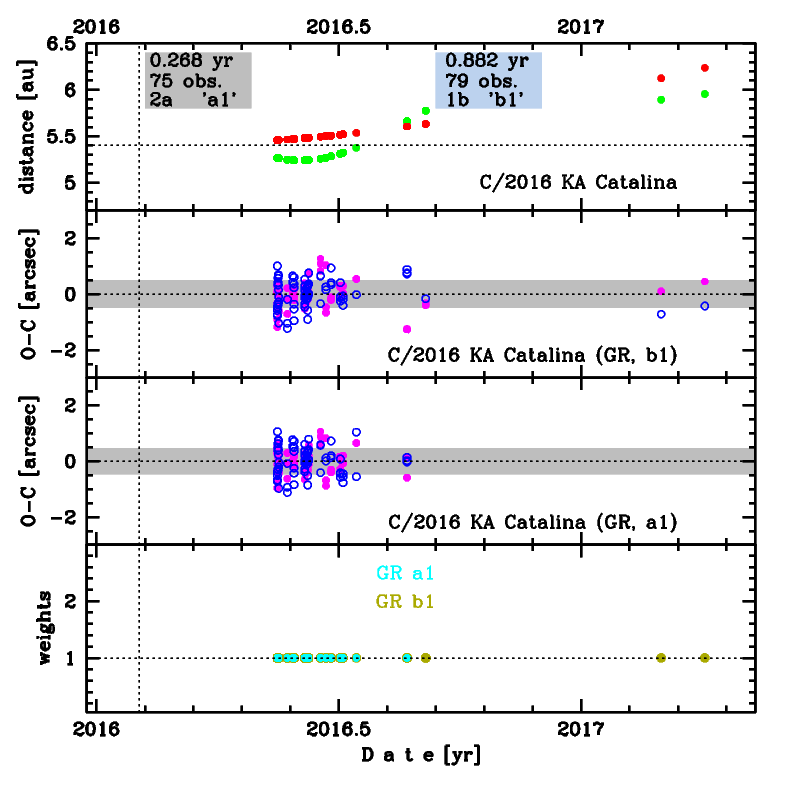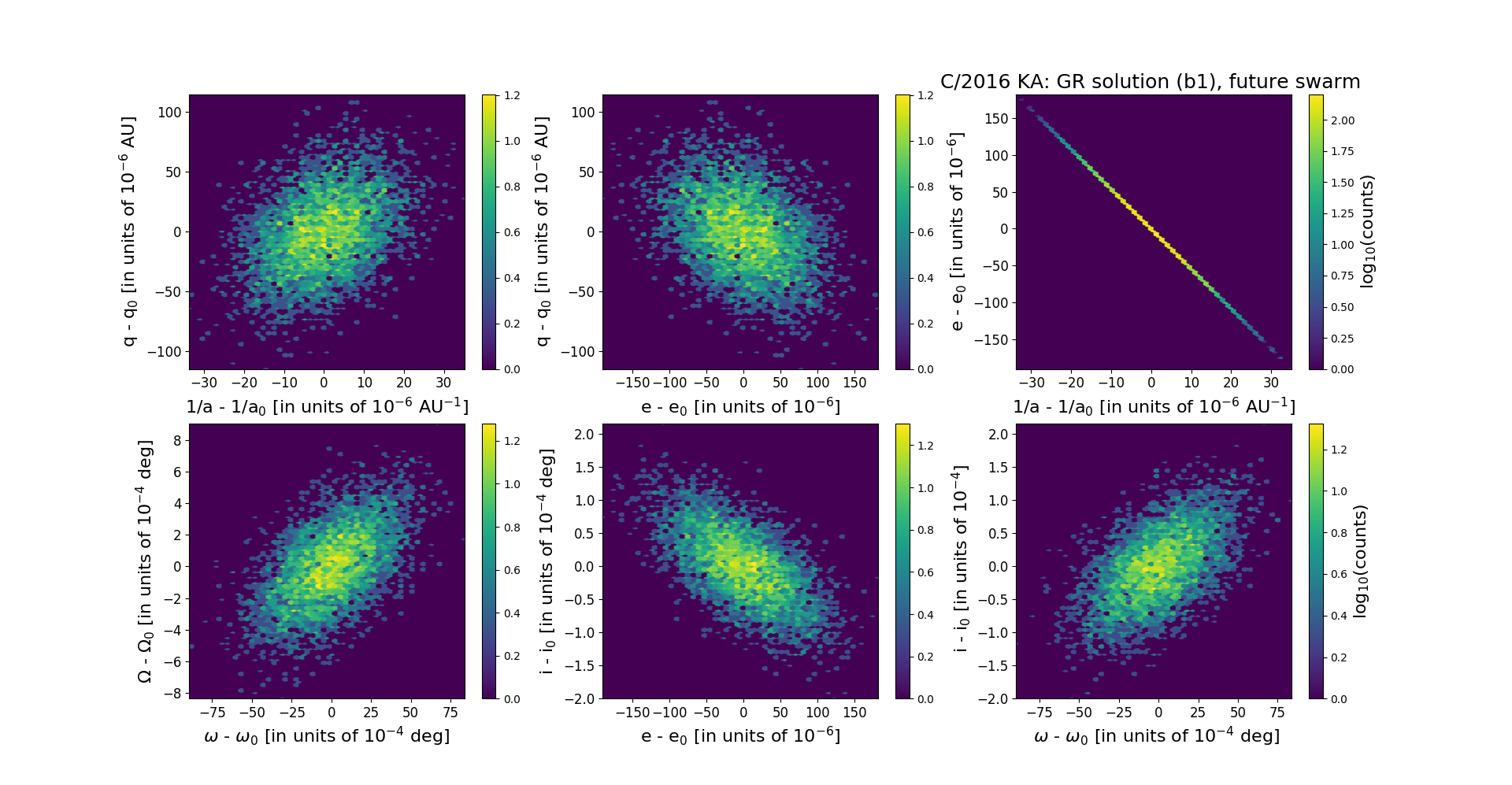C/2016 KA Catalina
more info
Comet C/2016 KA was discovered on 16 May 2016 with Catalina Sky Survey, that is about 3.5 months after its perihelion passage. This comet was observed about three months until 3 April 2017.
Comet had its closest approach to the Earth on 2 June 2016 (5.240 au), about 4 months after its perihelion passage and about 2 weeks after its discovery.
The preferred solution given here is based on data spanning over 0.88 yr in a range of heliocentric distances from 5.46 au to 6.24 au.
This comet suffers insignificant planetary perturbations during its passage through the planetary system; have orignal and future semimajor axes shorter than 5000 au.
Comet had its closest approach to the Earth on 2 June 2016 (5.240 au), about 4 months after its perihelion passage and about 2 weeks after its discovery.
The preferred solution given here is based on data spanning over 0.88 yr in a range of heliocentric distances from 5.46 au to 6.24 au.
This comet suffers insignificant planetary perturbations during its passage through the planetary system; have orignal and future semimajor axes shorter than 5000 au.
| solution description | ||
|---|---|---|
| number of observations | 79 | |
| data interval | 2016 05 16 – 2017 04 03 | |
| data type | observed only after perihelion (POST) | |
| data arc selection | entire data set (STD) | |
| range of heliocentric distances | 5.46 au – 6.24au | |
| detectability of NG effects in the comet's motion | NG effects not determinable | |
| type of model of motion | GR - gravitational orbit | |
| data weighting | NO | |
| number of residuals | 150 | |
| RMS [arcseconds] | 0.50 | |
| orbit quality class | 1b | |
| orbital elements (barycentric ecliptic J2000) | ||
|---|---|---|
| Epoch | 2324 10 05 | |
| perihelion date | 2016 02 01.62930996 | ± 0.01844924 |
| perihelion distance [au] | 5.40019327 | ± 0.00003147 |
| eccentricity | 0.99872799 | ± 0.00005235 |
| argument of perihelion [°] | 63.106872 | ± 0.002242 |
| ascending node [°] | 317.538306 | ± 0.000228 |
| inclination [°] | 104.5824 | ± 0.000052 |
| reciprocal semi-major axis [10-6 au-1] | 235.55 | ± 9.69 |
| file containing 5001 VCs swarm |
|---|
| 2016kab1.bpl |

Upper panel: Time distribution of positional observations with corresponding heliocentric (red curve) and geocentric (green curve) distance at which they were taken. The horizontal dotted line shows the perihelion distance for a given comet whereas vertical dotted line — the moment of perihelion passage.
Middle panel(s): O-C diagram for a given solution (sometimes in comparison to another solution available in CODE), where residuals in right ascension are shown using magenta dots and in declination by blue open circles.
Lowest panel: Relative weights for a given data set(s).
Middle panel(s): O-C diagram for a given solution (sometimes in comparison to another solution available in CODE), where residuals in right ascension are shown using magenta dots and in declination by blue open circles.
Lowest panel: Relative weights for a given data set(s).
